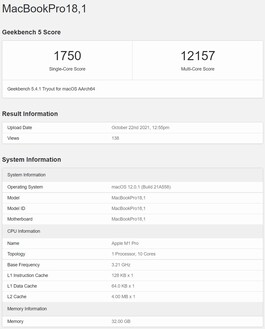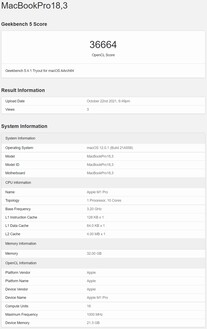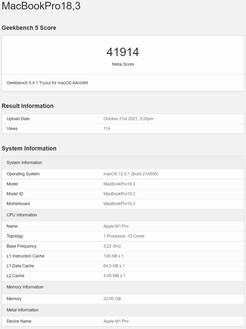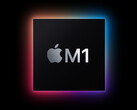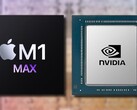Apple has offered up both the 2021 MacBook Pro 14 and MacBook Pro 16 with a comprehensive selection of M1 Pro and M1 Max SoC configurations (see table below). The M1 Pro can be configured with either 8 or 10 CPU cores and comes with 14 or 16 GPU cores, depending on the MacBook Pro model chosen. New Geekbench listings show the 10-core M1 Pro in action while some compute-related records have scores available for the chip with a 16-core GPU part. Unsurprisingly, the M1 Pro outscores the older M1 Apple Silicon across the board, which should be expected for a processor with generally more CPU and GPU cores. The graphics/compute scores in particular could potentially herald a new era for casual Mac gaming on the go.
| MacBook Pro 14 | MacBook Pro 16 | |
|---|---|---|
| M1 Pro | ||
| 8-core CPU/14-core GPU | ✓ | x |
| 10-core CPU/14-core GPU | ✓ | x |
| 10-core CPU/16-core GPU | ✓ | ✓ |
| M1 Max | ||
| 10-core CPU/24-core GPU | ✓ | ✓ |
| 10-core CPU/32-core GPU | ✓ | ✓ |
The M1 Pro tests show a score pattern of around 1,750 points for Geekbench 5 single-core and about 12,100 points for multi-core (current averages would have been artificially lowered by a seemingly outlier of a record). This would leave the new Apple Silicon at the top of the Geekbench Mac single-core chart while destroying anything with an M1 in it in the multi-core chart. A more-refined manufacturing process (5 nm vs. 14 nm for the Intel processor) even allows the M1 Pro to demolish the Intel Core i9-10910 that can be found in the 2020 27-inch iMac. The Apple SoC and its 10-core CPU has a +40.68% (single) and a +34.30% (multi) advantage over the 10-core Comet Lake desktop chip while not being nearly as power hungry.
As for graphics, the M1 Pro has been tested in both OpenCL and Metal. Yet again, the M1 Pro destroys anything by the M1, which is hardly a surprise considering the differences in GPU configuration. The average Metal score for the M1 Pro with 16-core GPU over three separate records is 41,371 while a single entry reveals an OpenCL mark of 36,664 points (over 38,000 points has been reported though). The M1 OpenCL scores position the Apple Silicon neatly between the Nvidia GeForce GTX 1650 with Max-Q Design (36,196) and the GeForce GTX 1650 (38,361). However, it is way behind the nearest Ampere SKU, the GeForce RTX 3050 Laptop GPU, which is in the OpenCL chart with 45,898. Those who want that level of graphics performance or higher will be better off selecting an M1 Max MacBook Pro.
Pre-order the 14-inch Apple MacBook Pro with M1 Pro chip on Amazon





